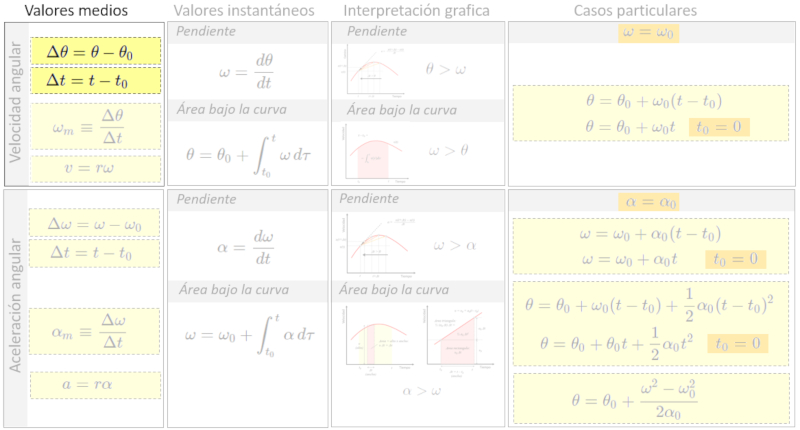Orientation: Angle of travel
Description
Once the concept of elapsed time has been introduced, the motion can be defined in terms of the angle traveled. To do this, we need to measure:
• the current angle, which is determined as the angle difference to an origin from which we are measuring;
• the initial angle, which is determined as the angle difference to the same previous origin, and is calculated as the difference between the first and second.

ID:(12516, 0)
Describing a Rotation
Concept
When describing a rotational motion, we cannot work with distance in the same way we do when describing translational motion.
• In this case, we must first determine the position of the axis (vector) of rotation.
• Then, we must determine the distance between the object and the axis of rotation.
• Finally, we must estimate the angle of rotation of the object around the axis.
In a rotational motion, the radius remains constant. Any changes in the radius are not part of the rotation, but rather a translation that the object may perform radially.
ID:(4967, 0)
Radians
Concept
In physics, it is common to use radians instead of degrees to measure angles in rotations. This is because in these types of movements, the objects that orbit cover distances that correspond to arcs of a circle. To determine the velocity of the object, it is necessary to calculate the length of the arc covered, which is easy to do if the radius of the orbit and the angle covered in radians are known. For this reason, angles are generally measured in radians to avoid the need for constant conversion between degrees and radians when performing calculations of this type.
ID:(311, 0)
Angle Difference
Equation
To describe the rotation of an object, we need to determine the angle variation ($\Delta\theta$). This is achieved by subtracting the initial Angle ($\theta_0$) from the angle ($\theta$), which is reached by the object during its rotation:
ID:(3680, 0)
